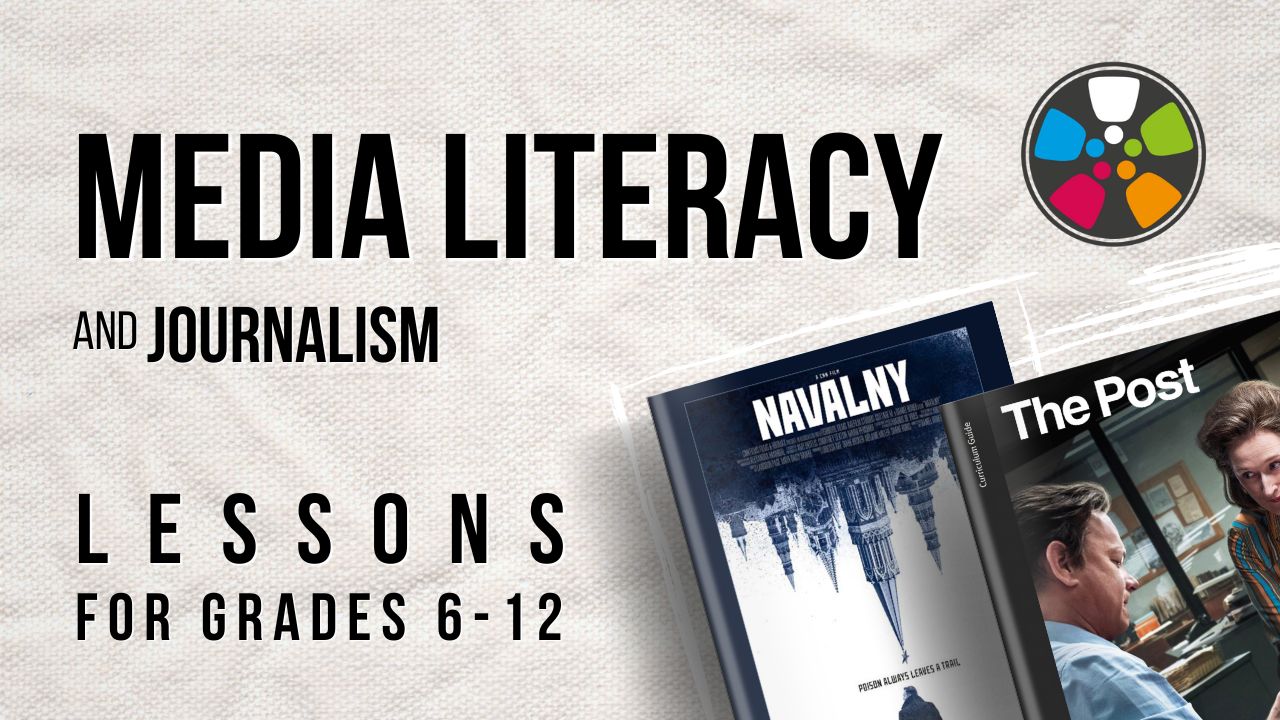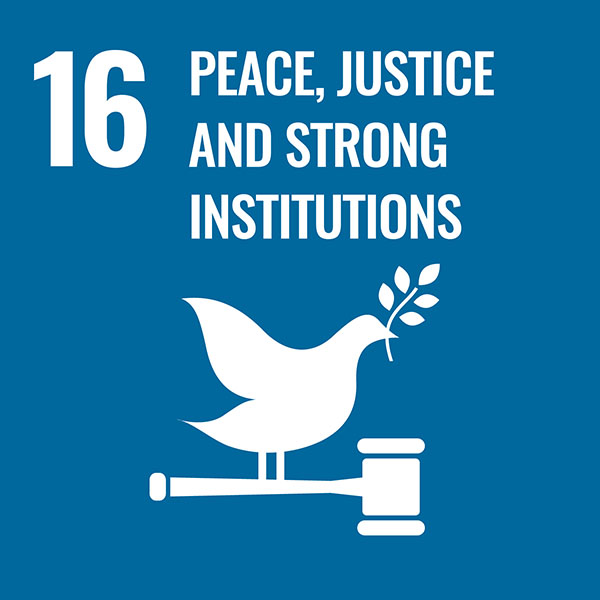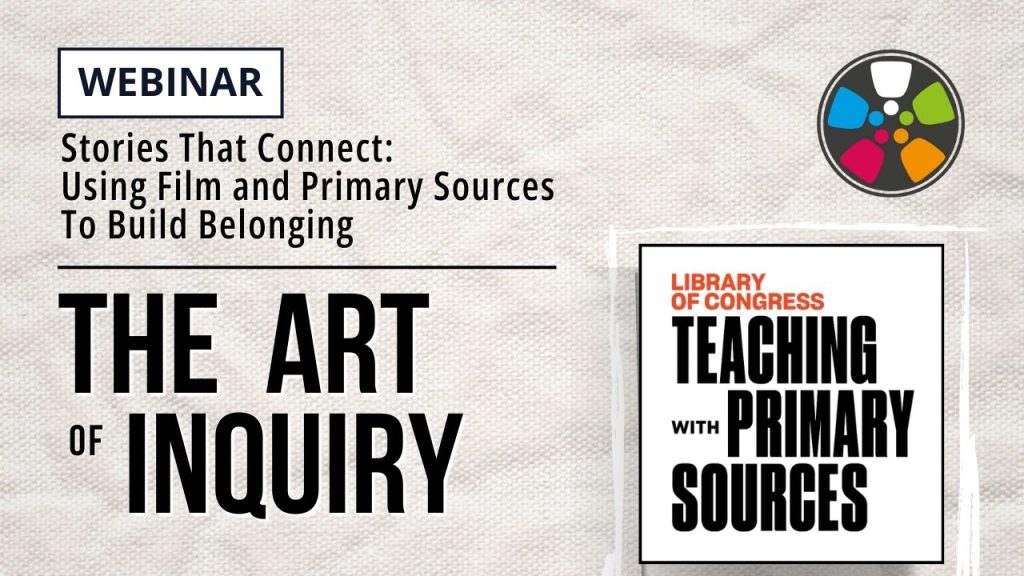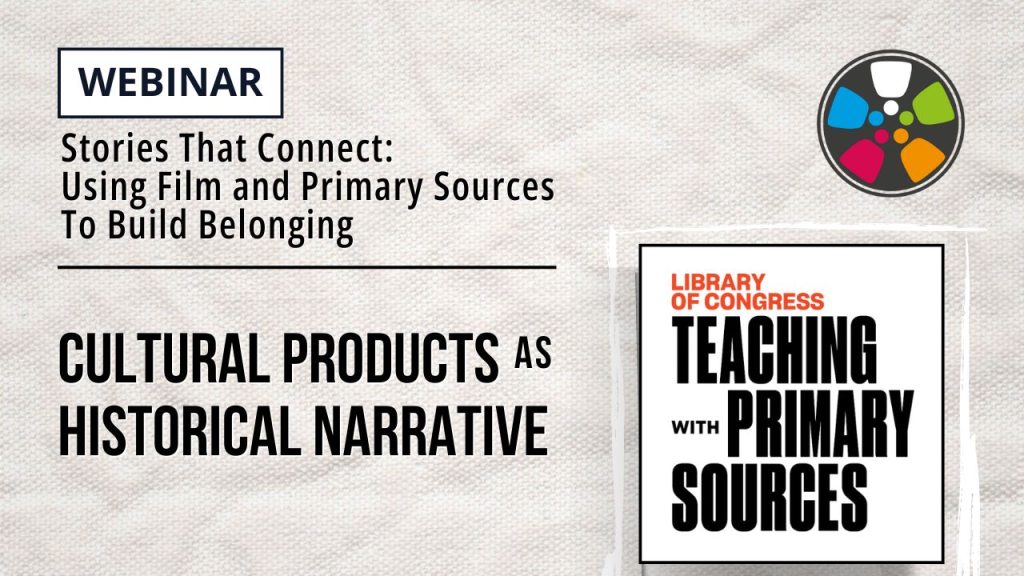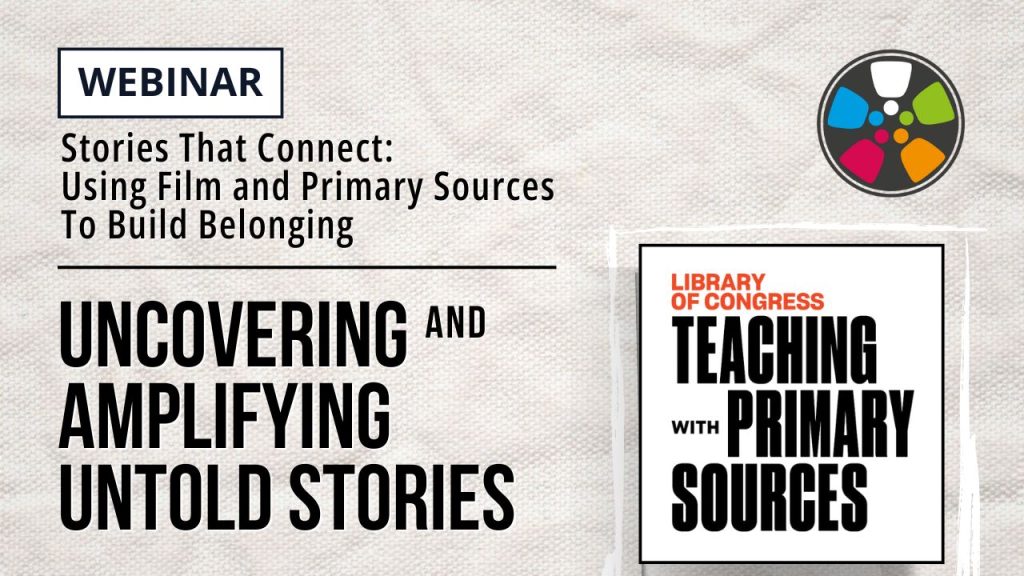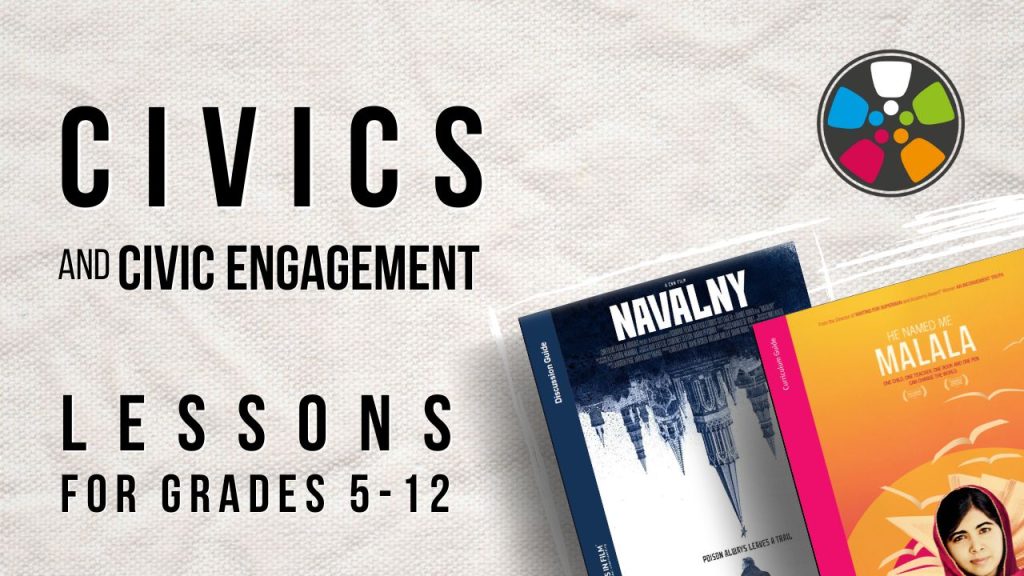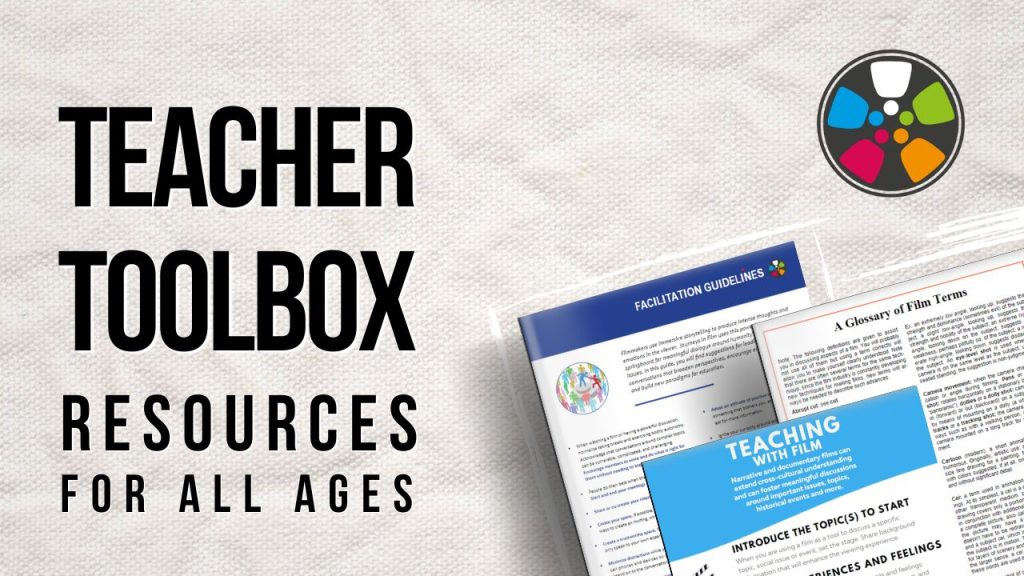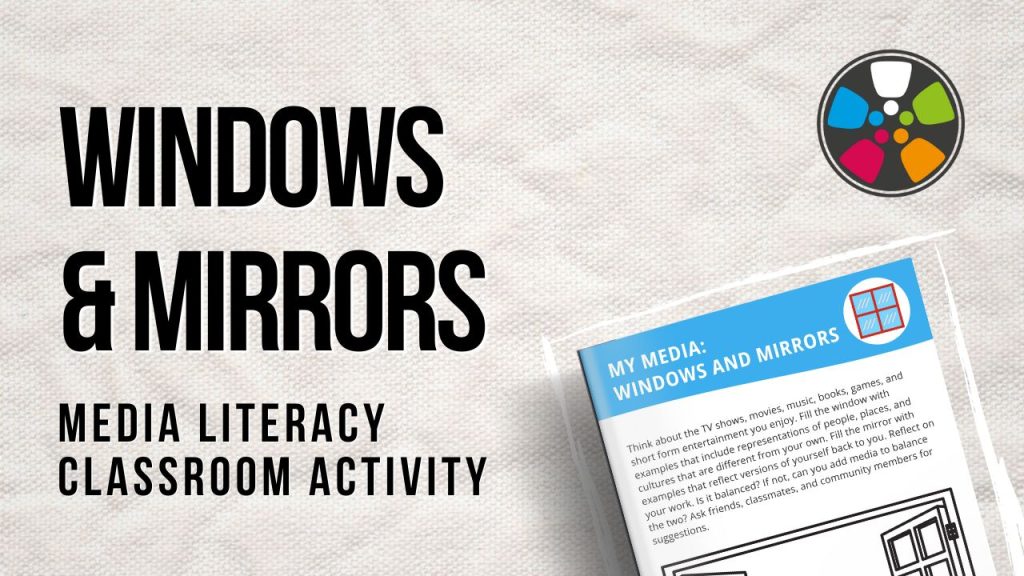Overview
These Media Literacy and Journalism Lessons can be used for Government, Journalism, Media Literacy, Social Studies classes and more. Additional resources for teaching with these films are available from the Journeys in Film Resource Library.
New Resources added October 2025! To get notifications about updates to this collection and other new resources, sign up for our newsletter.
Lessons
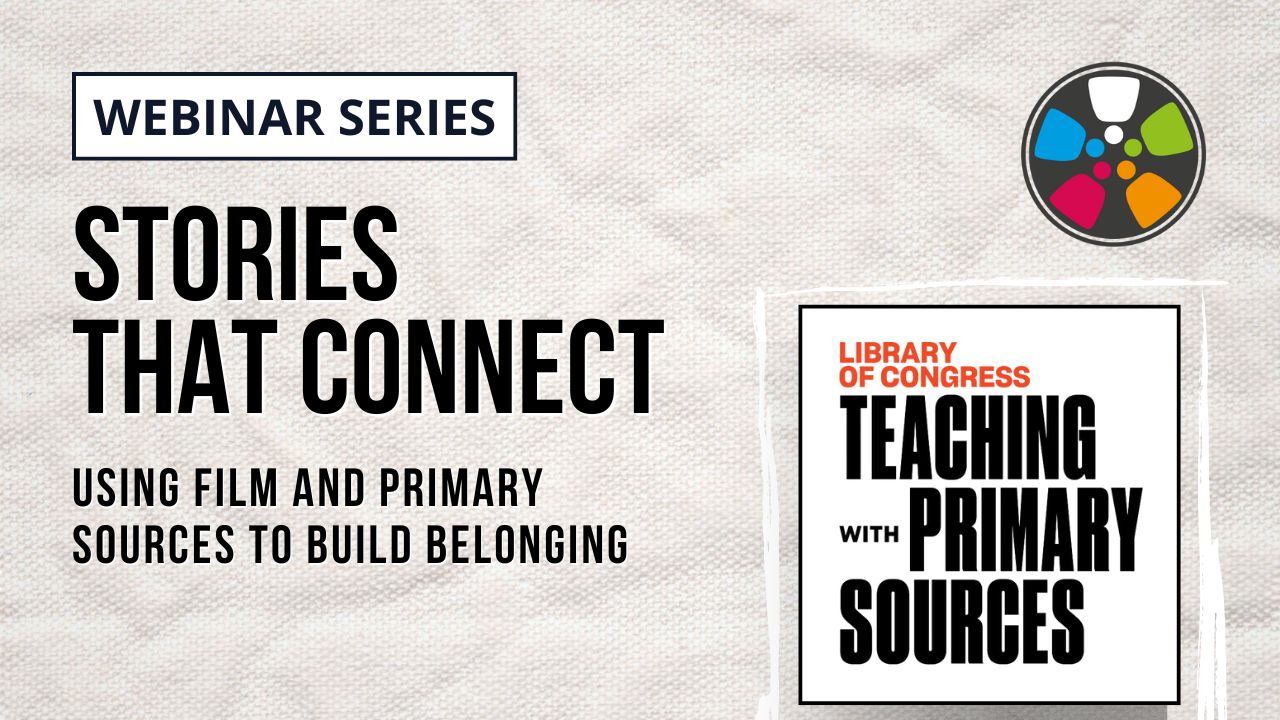
Stories That Connect: Using Film and Primary Sources to Build Belonging
Stories That Connect: Using Film and Primary Sources to Build Belonging is a professional development webinar series from Journeys in Film that focuses on Project-Based Learning (PBL) using primary sources, including documentary films, cultural products and Library of Congress materials. Participants will explore ways to foster belonging through compelling and engaging PBL experiences. Registration is currently open for this live webinar series.
Learn more about Teaching with Primary Sources (TPS) through Project-Based Learning (PBL) to boost student engagement and equip students with media literacy skills across the curriculum. Learn more about this professional development webinar series.
Registration is currently open. All webinars are free.
Webinar Schedule
- Thursday, Nov. 6, 2025: The Art of Inquiry
- Tuesday, Jan. 27, 2026: Cultural Products as Historical Narrative, 7-9 pm ET / 4–6 pm PT | Register
- Tuesday, Mar. 10, 2026: Uncovering and Amplifying Untold Stories, 7-9 pm ET / 4–6 pm PT | Register
You can attend just one or two sessions but to take full advantage of this learning and tool-building opportunity, we recommend participating in all three free webinar sessions of the series.
If you have any questions or would like assistance with registration, please email Hershawna Frison: hershawna@journeysinfilm.org.
And So It Begins
From acclaimed Filipino-American Director Ramona Diaz comes And So It Begins, a powerful documentary set amidst the traditional pomp and circumstance of Filipino elections in which a quirky people’s movement rises to defend the nation against deepening threats to truth and democracy. In a collective act of joy as a form of resistance, hope flickers against the backdrop of increasing autocracy.
This learning guide includes three relevant sections.
- Journalism, Disinformation, and Social Media explores the current online ecosystem, ethical questions, and critical thinking skills for media literacy.
- Journalist Profile of Maria Ressa introduces the investigative reporter and Nobel Prize winner known for her courage and work on disinformation and “fake news.”
- Literary Connection: Maria Ressa’s inspiring Loyola Schools Commencement Speech addresses disinformation, social media, and A.I..
For grades 8 and up.
Crip Camp
Crip Camp: A Disability Revolution shares with insight, humor, and joy the experiences of a group of disabled teenagers and their journey to adulthood and activism.
Understanding What You Are Watching explores forms of media and media literacy, how to interpret and analyze media, and why multiple stories and voices are valuable.
This lesson includes four printable handouts: Different Kinds of Media, Core Questions about Media, Media for Analysis, Images for Analysis.
For grades 11 and up.
Download Media Literacy Lesson
Preview Media Literacy Lesson
Defiant Requiem
Rafael Schächter, a brilliant Czech conductor, was arrested and sent to the concentration camp of Theresienstadt (Terezin) in 1941. This documentary explores a unique chapter in Holocaust history when prisoners used music and the arts to sustain their spirits and resist Nazi oppression. Soaring concert footage, survivor recollections, cinematic dramatizations, and animation bring this story to life.
This Propaganda Lesson explores the way propaganda influences audiences, propaganda in times of crisis, and the specific use of propaganda during the Holocaust.
It includes five printable handouts: WWII Propaganda, Guide for Discussion Leaders, Contemporary Propaganda, Moving Images, The Purpose of Propaganda.
For grades 6 and up.
Gabby Giffords Won’t Back Down
Gabby Giffords Won’t Back Down tells the extraordinary story of former Arizona Congresswoman Gabby Giffords: her relentless fight to recover following an assassination attempt in 2011, and her new life as one of the most effective activists in the battle against gun violence. Featuring extensive verité filming of Gabby and her husband, astronaut-turned-senator Mark Kelly; interviews with Barack Obama and other friends and colleagues; and exclusive access to stunning videos taken in the weeks following her near-death, this film is the story of a rising star transformed by gun violence, and a close-up portrait of the marriage that sustains her.
The Media Responsibility section of this learning guide explores how to check if a media source is accurate.
The section includes useful terms, personal reflection questions (that could be used for journaling or short essays), discussion questions and extension activities.
For grades 8 and up.
Download Media Responsibility Download Media Responsibility in Spanish
Preview Media Responsibility Preview Media Responsibility in Spanish
Navalny
Enthralling and intimate, director Daniel Roher’s NAVALNY unfolds with the pace of a thriller as it follows Russian opposition leader Alexei Navalny in his quest to identify the men who poisoned him in August 2020. Shot in Germany as the story unfolded and offering extraordinary access to the investigation, NAVALNY is a fly-on-the-wall documentary that is also a study of Navalny the man—a portrait of a leader intent on reform who will not be cowed by anything, including his own poisoning.
Alexei Navalny died as a political prisoner in a Siberian penal colony on February 16, 2024.
This Learning Guide has two relevant sections:
Data Tracking, State Surveillance, and the Role of Journalism asks: Is it possible for data tracking to be used for justice without compromising individual privacy?
Social Media, Censorship, and Propaganda explores how to consume informational critically.
These resources include useful terms, personal reflection questions (that could be used for journaling or short essays), discussion questions and extension activities. The two lessons can be used together or on their own. We have packaged them together for this lesson collection.
For grades 9 and up.
Searching for Amani
Set in a Kenyan conservancy facing extreme drought, Searching for Amani follows a 13-year-old’s pursuit of truth as he uncovers the invisible forces of climate change threatening his home and future. What begins as a young aspiring journalist’s search for answers to his father’s death becomes a powerful coming-of-age story.
This journalism lesson explores investigative journalism and the role of citizen journalists.
This lesson features a mock press conference activity, including a printable handout of interview tips.
For grades 7 and up.
The Cup
In The Cup (original title ཕོར་པ། or Phörpa), two young Tibetan refugees arrive at a monastery in exile in India. Its serene atmosphere is disrupted by soccer fever, the chief instigator being a young student, the soccer enthusiast Orgyen. Determined to see the finals of the World Cup, he sets out to organize the rental of a TV set for the monastery. The enterprise becomes a test of solidarity, resourcefulness, and friendship for the students and monks.
The Politics of Production This lesson focuses explores budget constraints and filmmaking, new technologies, and bias in the media.
This lesson features four key activities: Exploring Point of View, Values, Stereotypes, and Writers Pitch to Producers (Simulation). The Writers Pitch exercise includes an assessment rubric for the pitch activity and a printable handout to help students craft their pitch.
For grades 6-8, adaptable for higher grades.
The Post
The Post reveals the partnership between The Washington Post’s Katharine Graham, the first female publisher of a major American newspaper, and editor Ben Bradlee, as they race to catch up with The New York Times to expose a massive cover-up of government secrets spanning three decades and four U.S. presidents. They risk their careers — and their very freedom — to bring long-buried truths to light.
We have two lessons available for this film focused on journalism.
Journalism and Fake News explores “fake news”, ethical journalism, evaluating the news, and social media. The lesson features four printable handouts: Spotting Fake News. The Five Principles of Ethical Journalism, Organizer for News Outlet Presentation, News Outlet Rating.
Why is the Free Press So Important? examines American press freedom, press freedom around the world, and editorial challenges to freedom of the press. The lesson includes three printable handouts: Why is a Free Press so Important?, Press Freedom Around the World, Outlining an Editorial.
For grades 9-10.
Download Journalism Lesson Download Free Press Lesson
Preview Journalism Lesson Preview Free Press Lesson
The Social Dilemma
Discover what’s hiding on the other side of your screen with The Social Dilemma. We post, we like, and we share— but what are the consequences of our growing dependence on social media? This documentary-drama hybrid reveals how social media is reprogramming civilization with tech experts sounding the alarm on their own creations.
A wide variety of materials about Social Media Literacy are available for The Social Dilemma, through the film’s website. These include: Classroom Debate Resource, Gen Z Action Guide, Center for Humane Technology – Youth Toolkit, and Bonus Interview Clips.
Get the Social Media Literacy Resources.
Windows and Mirrors
Journeys in Film created this Media Analysis Exercise to give students a way to consider which perspectives and stories are represented in their media diets . We offer two versions:
- A one-page handout with a window on the top of the page and a mirror at the bottom with space for learners to write in.
- A one-page handout with a window on the top of the page and a mirror at the bottom with space for learners to write in.
Download Windows and Mirrors Handout Download Media Audit Log
Preview Windows and Mirrors Handout Preview Media Audit Log
Group Discussion Facilitation Guidelines
These tips can help you create safe space for classroom engagement on the themes and subjects of these films.
Sustainable Development Goals
Journeys in Film supports the United Nations Sustainable Development Goals. Learn more about teaching with UN SDGs. This curriculum guide connects to the following SDGs.Join Our Community
Receive the latest updates on new educational resources, upcoming films, and exclusive insights into how film can transform teaching and learning.
No spam. Just free teaching resources. We do not share or sell your data. View Privacy Policy

